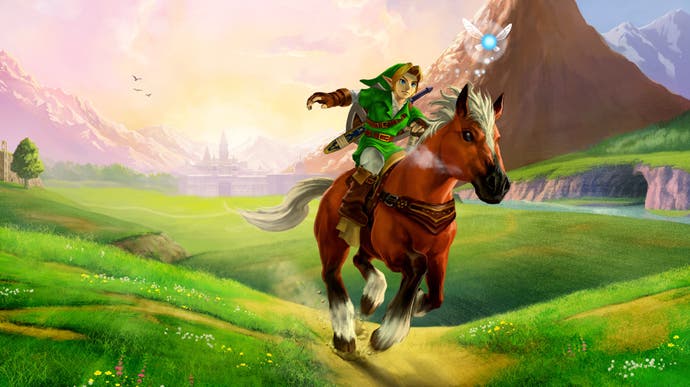Don't worry, Miyamoto doesn't like Navi either
Hey, listen!
Zelda creator Shigeru Miyamoto has admitted to disliking Navi, calling Ocarina of Time's fairy companion the "biggest weakpoint" of the game.
The comments come from a 1999 interview with Miyamoto originally printed in a Japanese strategy guide and now published online.
Commenting on the difficulty of the puzzles, Miyamoto admitted that the Navi hint system is "a little too unfriendly", though pursuing perfection in a hint system would drive the developers into a hole.
"If you read Navi's text, she says the same things over and over. I know it makes it sound bad, but we purposely left her at a kind of 'stupid' level," said Miyamoto.
"I think if we'd tried to make Navi's hints more sophisticated, that 'stupidity' would have actually stood out even more. The truth is I wanted to remove the entire system, but that would have been even more unfriendly to players."
He continued: "You can think of Navi as being there for players who stop playing for a month or so, who then pick the game back up and want to remember what they were supposed to do." That's certainly a system more games should implement.
Difficulty is a prominent part of the interview. With Ocarina of Time being the first 3D Zelda game, Miyamoto and the development team had to carefully guide the player into the vast realm of Hyrule.
That's perhaps why Miyamoto himself focused heavily on the first section of the game culminating in the Deku Tree dungeon. He also pulled back on sword combat to make it simpler, though he admits to being disappointed with the results.
"I'm pretty bad at action games myself, so I wanted Ocarina to have a system with depth, something you could steadily improve at the more you played-though it didn't need to be as complex as Tekken, of course," he said. Later games would expand hugely on sword combat leading up to the motion controls of Skyward Sword.
Miyamoto was also heavily involved with adding a "Zelda vibe" to the game. "I mean little traps and puzzles that, once solved, make the player feel like 'Ah, now this is a Zelda game'," he said.
And what is a "Zelda vibe" exactly? "Novelty, mystery, a certain inimitable quality... the truth is, you can analyse from an infinite number of viewpoints I think," he said.
Miyamoto also discusses dungeon design and how the series followed a "Dungeon Supremacy" philosophy. The original game, for instance, didn't have an overworld at first but was just dungeons.
For Ocarina of Time, the team were no longer constrained by the linear labyrinth design of previous games and instead were able to create more unique dungeons.
"Instead of mapping your way through a maze, I think what's more important is a sense of dread, a sense of pressure, and of course an opportunity for finding secrets and solving puzzles-we should be pursuing an emotional immediacy, the sense that you are really there," said Miyamoto.
"Before Ocarina of Time was released, I spoke of Zelda as having a 'scent', or a 'temperature', and that's what I was trying to get at."
The interview has a number of other titbits of information.
For instance, Chain Chomp was originally going to feature in the Gerudo Fortress. And with the game's jumping and cinematic camera, Miyamoto was aiming to form a new "grammar" for gaming.
The most memorable comment Miyamoto received was that fans wanted to ride the cows. Twenty four years later, this still hasn't been implemented.
Read the full interview here. The Legend of Zelda: Ocarina of Time is available to play on Nintendo Switch Online - it's sequel Majora's Mask will be released next month.


